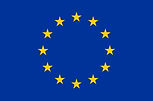top of page
About SMR
During a seismic-geodynamic process, frictional heating and pressure are generated on sediments fragments resulting in deformation and alteration of minerals contained in them. The luminescence signal enclosed in minerals crystal lattice can be affected and even zeroed during such an event. This has been breakthrough in geochronological studies as it could be utilized as a chronometer for the previous seismic activity of a tectonically active area. Although the employment of luminescence dating has in some cases been successfully described, a comprehensive study outlining and defining protocols for routine luminescence dating applied to neotectonic studies has not been forthcoming.
This is due to the fact that the required resetting mechanism of minerals luminescence signal under the influence of friction caused by the relative motion of a fault has been poorly investigated. The SMR project is the experimental investigation, recording and parameterization of the effects of tectonic phenomena on minerals luminescence signal and the development of detailed protocols for the standardization of the luminescence methodology for directly dating deformed geological formations, so that the long-term temporal behaviour of seismically active faults could be reasonably understood and modeled.
This was achieved by: a) identifying and proposing brittle fault zone materials suitable for luminescence dating using a multi-analytical approach which combines Petrological, Mineralogical and Chemical analyses, b) investigating the “zeroing” potential of the luminescence signal of minerals contained in fault zone materials by employing experimental simulations of tectonic processes in the laboratory, combined with luminescence measurements on samples collected from real fault zones (not subject to laboratory simulations). The project signified that luminescence is potentially an excellent technique for dating fault rock materials, something that may be considered as a step change in the way that applied research for dating and thus predicting seismic events is carried out. The project provided new tools for geo-hazards evaluations, adding to the efforts for “Securing societies” and contributing to EU sustainability.
 |
|---|


Get in Touch
Department of Geophysics, Division of Earth and Planetary Sciences
Graduate School of Science
Kyoto University
Kyoto 606-8502, Japan
OR
Institute of Nanoscience and Nanotechnology (INN)
National Center for Scientific Research(NCSR)“Demokritos”
Athens 153 10
Greece
Tel.: +30 2106503803

“This project has received funding from the European Union’s Horizon 2020 research and innovation programme under the Marie Sklodowska-Curie grant agreement No 743607”.
©2017 by SMR. Proudly created with Wix.com
bottom of page





